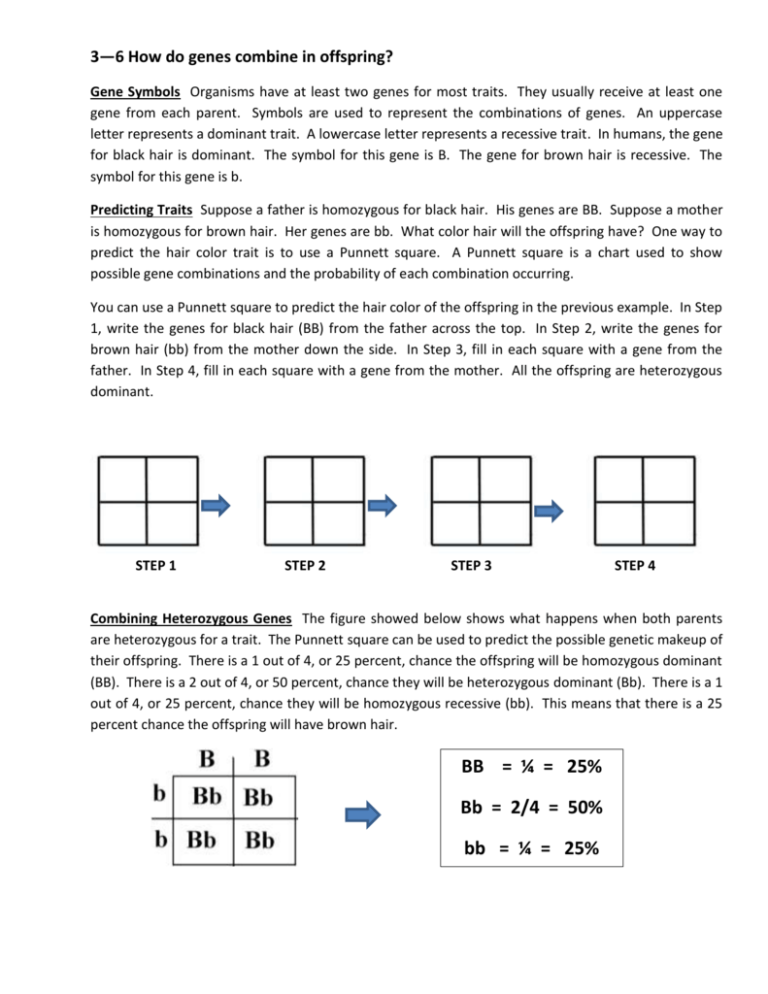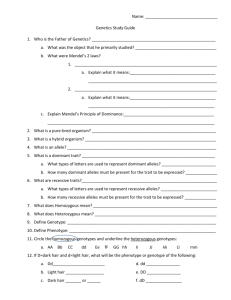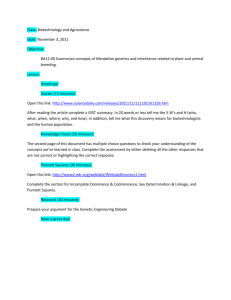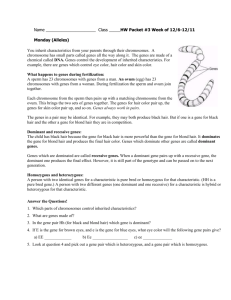What are Punnett Squares?
advertisement

3—6 How do genes combine in offspring? Gene Symbols Organisms have at least two genes for most traits. They usually receive at least one gene from each parent. Symbols are used to represent the combinations of genes. An uppercase letter represents a dominant trait. A lowercase letter represents a recessive trait. In humans, the gene for black hair is dominant. The symbol for this gene is B. The gene for brown hair is recessive. The symbol for this gene is b. Predicting Traits Suppose a father is homozygous for black hair. His genes are BB. Suppose a mother is homozygous for brown hair. Her genes are bb. What color hair will the offspring have? One way to predict the hair color trait is to use a Punnett square. A Punnett square is a chart used to show possible gene combinations and the probability of each combination occurring. You can use a Punnett square to predict the hair color of the offspring in the previous example. In Step 1, write the genes for black hair (BB) from the father across the top. In Step 2, write the genes for brown hair (bb) from the mother down the side. In Step 3, fill in each square with a gene from the father. In Step 4, fill in each square with a gene from the mother. All the offspring are heterozygous dominant. STEP 1 STEP 2 STEP 3 STEP 4 Combining Heterozygous Genes The figure showed below shows what happens when both parents are heterozygous for a trait. The Punnett square can be used to predict the possible genetic makeup of their offspring. There is a 1 out of 4, or 25 percent, chance the offspring will be homozygous dominant (BB). There is a 2 out of 4, or 50 percent, chance they will be heterozygous dominant (Bb). There is a 1 out of 4, or 25 percent, chance they will be homozygous recessive (bb). This means that there is a 25 percent chance the offspring will have brown hair. BB = ¼ = 25% Bb = 2/4 = 50% bb = ¼ = 25% CHECKING CONCEPTS 1. A capital letter always represents a gene. 2. The recessive gene for brown hair in humans is shown by the symbol . 3. When one parent is homozygous dominant and the other parent is homozygous recessive, their offspring are all heterozygous 4. If both parents are heterozygous, then there is a 50 percent chance their offspring will have traits. .










